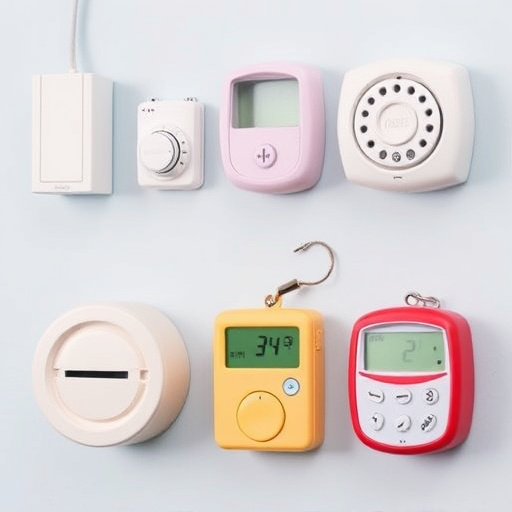Lone workers face heightened risks without direct supervision, emphasizing the critical need for effective safety measures. High-decibel personal alarms (105-130 dB) are key tools for distress signaling in hazardous settings, ensuring swift assistance through powerful sounds that penetrate ambient noise. Choosing a system requires considering features like decibel level, customization, connectivity, durability, and user-friendly interfaces. Strategic planning, tailored training, and devices like the Maximum Decibel Personal Alarm Safety enhance emergency response times, saving lives in remote areas.
Lone workers, defined as individuals performing tasks without immediate on-site supervision, face unique risks. This article explores critical safety alert systems designed to protect them. We delve into understanding the specific hazards lone workers encounter and the pivotal role of maximum decibel personal alarms in mitigating these risks. Key features for effective alert systems are analyzed, followed by implementation strategies and training guidelines to ensure optimal use.
- Understanding the Risks of Lone Workers
- The Role of Maximum Decibel Personal Alarms
- Key Features to Consider in Safety Alert Systems
- Implementation and Training for Effective Use
Understanding the Risks of Lone Workers
Lone workers, by definition, operate independently and without direct supervision. While this autonomy offers numerous benefits in terms of efficiency and flexibility, it also significantly increases potential risks. These workers often encounter situations where help is not readily available, making them more vulnerable to accidents, injuries, or even life-threatening emergencies. Understanding these inherent dangers is the first step towards implementing effective safety measures.
One critical aspect to consider is the role of audible alerts in alerting others to a worker’s distress. Personal alarms designed for maximum decibel output are essential tools. These devices can rapidly convey an emergency signal, ensuring that help arrives swiftly, especially in remote or isolated areas. Features like long battery life and water resistance further enhance their reliability, addressing common challenges faced by lone workers in diverse environments.
The Role of Maximum Decibel Personal Alarms
Personal alarms designed with maximum decibels play a pivotal role in enhancing the safety of lone workers, especially in hazardous environments. These devices are specifically engineered to ensure that an individual’s presence and distress signals are immediately noticed, even in remote or noisy locations. When activated, these personal alarms emit a loud, piercing sound, typically ranging from 105 to 130 decibels, which can be heard over distances, alerting nearby colleagues, emergency services, or even wildlife in the vicinity (in outdoor settings) to the wearer’s location and potential danger.
The effectiveness of maximum decibel personal alarms lies in their ability to overcome ambient noise and capture attention swiftly. This is particularly crucial for lone workers who might be at risk without immediate support. With these alarms, a worker can quickly signal an emergency, request assistance, or deter potential threats, significantly improving response times and potentially saving lives.
Key Features to Consider in Safety Alert Systems
When choosing a safety alert system for lone workers, several key features stand out as essential. Firstly, consider the maximum decibel level of the personal alarm. A loud, piercing sound is crucial to attract attention quickly in an emergency. Systems with alarms reaching at least 105 decibels have proven effective in ensuring timely responses. Additionally, look for alert systems that offer customizable settings and multiple activation methods, such as manual buttons, voice-activated triggers, or automatic fall detection, catering to diverse work environments and individual preferences.
Other vital aspects include reliable connectivity, whether through cellular networks or GPS, enabling immediate communication with support personnel. Durability and water resistance are also important considerations for workers in outdoor or harsh conditions. Moreover, easy-to-read displays and intuitive interfaces enhance usability, ensuring that workers can activate alerts swiftly and accurately.
Implementation and Training for Effective Use
Implementing a safety alert system for lone workers requires careful planning and comprehensive training to ensure its effective use. It’s crucial to choose a system that suits the specific needs and work environments of the individuals, such as a Maximum Decibel Personal Alarm Safety device. These devices are designed to attract attention quickly with high-intensity sounds, making them ideal for remote or isolated situations where help might be delayed.
Training should cover not just the technical aspects of using the alarm but also scenarios that mimic potential hazards. Educating workers on when and how to activate the alert, as well as post-activation procedures, is essential. Regular drills and simulations can help familiarize users with the system’s capabilities, ensuring they know exactly how to respond in an emergency situation.
Lone workers face unique challenges, making it crucial to implement effective safety alert systems. By understanding the risks and choosing the right tools, such as maximum decibel personal alarms, organizations can significantly enhance their employees’ safety. Key features like long battery life, automatic fall detection, and water resistance ensure these devices are reliable in various environments. Proper implementation and training are vital for ensuring that lone workers know how to use these systems effectively, making them essential tools in modern workplace safety management.
